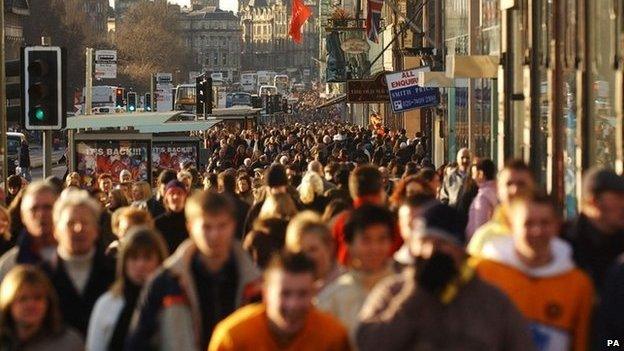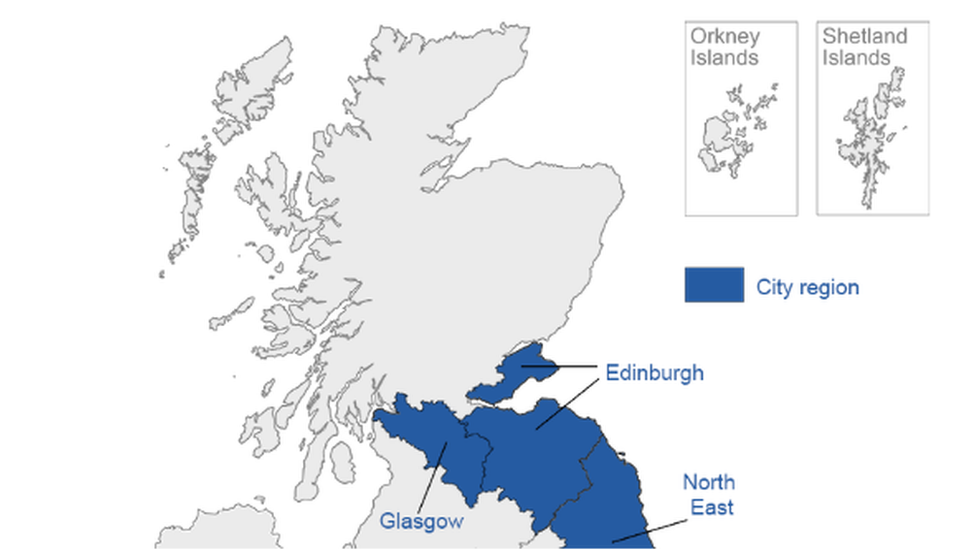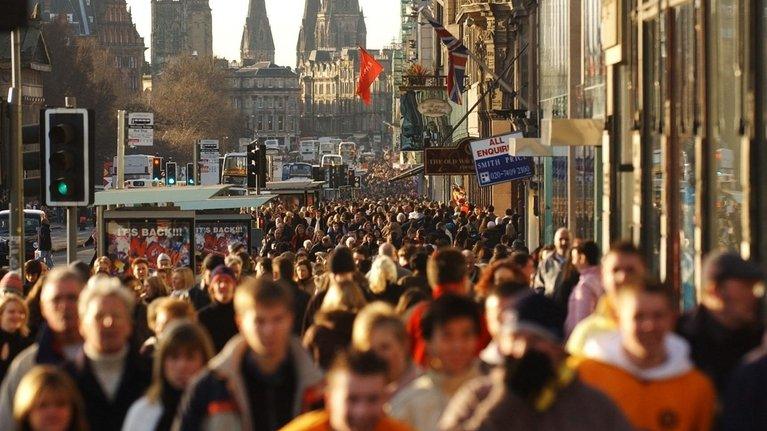Slow population growth for Scotland's biggest city
- Published

Edinburgh saw its population rise to 1,350,000 since 2011
The Glasgow area had the lowest population growth of any major city in the UK since 2011, new figures show.
Data released by the Office for National Statistics, external showed the city increased its population by just 1% in the past five years.
That contrasts with the Edinburgh "city region", which saw the number of its residents rise by 2.6% to 1,350,000.
The ONS, which assessed births, deaths and migration, said Glasgow would continue to see slow population growth.
It projected that the city and its surrounding areas would only rise by 2.2% from its current 1,804,00 residents to 1,837,000 in 2025.
They measured population figures for "city regions" across the UK and found Greater London, which currently has a population of 8,674,000, had population growth six times that of Glasgow over the period.
All city regions across the UK had more births than deaths and saw population gain from international migration, but at 0.9% Glasgow's was less than the proportional increase for nearly all other areas of the UK.
Across Glasgow city region - which included East Dunbartonshire, East Renfrewshire, Glasgow City, Inverclyde, North Lanarkshire, Renfrewshire, South Lanarkshire, and West Dunbartonshire - net migration stood at just 3,000, while there were also marked declines in the number of those of working age.
However, the data also suggested that like Edinburgh, Glasgow managed to retain many of its graduates over the period.

The ONS assessed population changes in two "city regions" of Scotland
Glasgow's death rate was more than 20% higher than Bristol's between mid-2011 and mid-2015, despite the fact that both city regions had similar proportions of people aged 65 and over.
As far as population projection was concerned, Edinburgh's population is expected to go up 7.3% to 1,447,000 by 2025.
The ONS figures for the city included the Lothians, Fife and the Scottish Borders.
They showed that the area enjoyed a boost from both internal (where people moved from elsewhere in Scotland) and international migration.
Net migration from abroad stood at 4,000, while internal migration measured 2,700 since 2011.
The figures also showed that 39% of Edinburgh's residents fell into the 16-44 age group.
Between the ages of 30 and 44, Edinburgh was the only city region with a small net internal migration gain.
The ONS said that unlike some city regions, Edinburgh had a large and varied "physical extent", including extensive rural areas, which improved its appeal to both metropolitan and non-metropolitan lifestyles.
- Published14 May 2014

- Published30 April 2014

- Published8 August 2013

- Published17 December 2012
